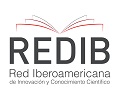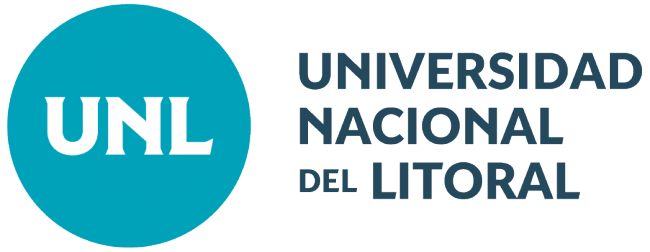First report of Cooperia curticei (Strongylida: Trichostrongylidae) in sheep from northwestern Argentina
DOI:
https://doi.org/10.14409/favecv.v20i1.10149Keywords:
Ovine, Cooperia, Nematode, SaltaAbstract
Cooperia curticei is a nematode related to sheep that is housed in the small intestine. Its presence in Argentina has been reported in environments such as the semi-arid region in the Pampa, the sub-humid Pampas in Buenos Aires and in the subtropical region in Corrientes. The objective of this work is to report the presence of Cooperia curticei in the small intestine of a sheep from the town of Cerrillos in Salta. A worm burden of 600 adult forms of Cooperia spp. was determined in the small intestine. These were identified as Cooperia curticei. As relevant taxonomic features the branches of the dorsal ray curved backwards showing a lyre shape. As for the spicules, they measured an average of 146.8 µm (± 5.24), with a marked concavity in the middle part of the body and with a stem with a final curvature similar to a foot. This finding is the first of its kind in the NOA region and demonstrates the adaptation of C. curticei to a sub-Andean mountain type climate. This work complement that previously described in the region, where the presence of Cooperia spp. in sheep was described but without species determination.
References
Ahluwalia JS, Charleston WAG. 1975. Studies on the pathogenicity of Cooperia curticei for sheep. NZ. Vet. J. 23: 197-199.
Amarante AFT, Bagnola J, Amarante MRV, Barbosa MA. 1997. Host specificity of sheep and cattle nematodes in Sao Paulo state, Brazil. Vet. Parasitol. 73: 89-104.
Bianchi AR, Bravo GC. 2008. Ecorregión Norandina: Descripción, subregiones, agroecosistemas, sistemas productivos y cartografía regional. INTA EEA Salta, Ediciones INTA. 60 pp.
Fiel C, Guzmán M, Steffan P, Rodríguez E, Prieto O, Bhushan C. 2011. The efficacy of trichlorphon and naphthalophos against multiple anthelmintic-resistant nematodes of naturally infected sheep in Argentina. Parasitol. Res. 109: 139-148.
Gibbons LM. 1981. Revision of the African species of the genus Cooperia Ransom, 1907 (Nematoda, Trichostrongylidae). Syst. Parasitol. 2: 219-252.
Kühne GI. 1986. Parásitos diagnosticados en el decenio 1976-1985 en la Unidad regional de Investigación en Sanidad Animal del noroeste Argentino. I. Helmintos y protozoarios. RIA, INTA, Argentina. 1: 73-78.
Muchiut SM, Fernández AS, Lloberas M, Steffan PE, Luque SE, Cardozo PA, Fiel CA. 2019. Recovery of fenbendazole efficacy on resistant Haemonchus contortus by management of parasite refugia and population replacement. Vet. Parasitol. 271: 31-37.
Ransom BH. 1911. The nematodes parasitic in the alimentary tract of cattle, sheep, and other ruminants. US Government Printing Office. 127: 70-71
Skryabin KI, Shikhobalova NP, Mougovoi AA., 1991. In: Brill, E.J. (Ed.), Key to parasitic nematodes. Volume 2: Oxyurata and Ascaridata. K¨oln, Leiden, New York, Kobenhaven, pp. 530-533.
Sissay MM, Uggla A, Waller PJ. 2007. Prevalence and seasonal incidence of nematode parasites and fluke infections of sheep and goats in eastern Ethiopia. Trop. Anim. Health Prod. 39: 521-531.
Steffan P, Sánchez E, Entrocasso C, Fiel C, Lloberas M, Riva E, Guzmán M. 2011. Eficacia de monepantel contra nematodes de ovinos con resistencia antihelmíntica múltiple en la Región Templada de Argentina. Vet. Arg. 273: 12-16.
Suárez VH. 1997. Diagnóstico de las parasitosis internas de los rumiantes en la región de invernada. Técnicas e Interpretación. Bol. Divul. Tec. (INTA-Anguil) 56: 50.
Suárez V.H. 2007. Epidemiología y control de los nematodos gastrointestinales en el oeste de la Región
Pampeada. In: Suarez, V.H., Olaechea, F.V., Rossanigo, C.E., Romero, J.R. (Eds), Enfermedades parasitarias de los ovinos y otros rumiantes menores en el Cono Sur de América, Ediciones INTA, Anguil, Argentina, PT. Pp. 43-62.
Suárez VH. Busetti MR, Bedotti OO, Fort MC. 1994. Parasitosis internas de los ovinos en la Prov. De La Pampa Semiárida. Rev. Fac. Agron. 7: 35-42.
Salvador A, Martínez G. 2007. Factores que Afectan la Producción y Composición de la Leche de Cabra: Revisión Bibliográfica Rev. Fac. Cs. Vet. UCV. 48: 61-76.
SIGSA. 2017. Dirección de Control de Gestión y Programas Especiales - Dirección Nacional de Sanidad Animal – SENASA. [Online] (https://www.argentina.gob.ar/senasa/caprinos-sector-primario).
Soares Filho G, McManus C, Mariante AS. 2001. Fatores genéticos e ambientais que influenciam algumas características de reprodução e produção de leite em cabras no Distrito Federal. Rev. Bras. Zootecnia 30: 133-140.
Suárez VH, Martínez GM. 2019. Características de los tambos caprinos comerciales y posibilidades de mejora genética en el noroeste argentino. Revista Veterinaria Argentina 36: 1-13.
Takma C, Akbaş Y, Taskin T. 2009. Modeling lactation curves of Turkish Saanen and Bornova goats. Asian J. Anim. Vet. Advances 4: 122-129.
Torres-Vázquez JA, Valencia-Posadas M, Castillo-Juárez H, Montaldo HH. 2010. Genetic and phenotypic trends for milk yield and milk composition traits of Saanen goats from Mexico, Rev. Mex. Cien. Pecuarias 1: 337-348.
Zamuner F, DiGiacomo K, Cameron AWN, Leury BJ. 2020. Effects of month of kidding, parity number, and litter size on milk yield of commercial dairy goats in Australia. J. Dairy Sci. 103: 954-964.
Downloads
Published
How to Cite
Issue
Section
License
FAVE Sección Ciencias Veterinarias ratifies the open access model, in which contents (in full) are available free to anyone in the internet. The costs of production and publication are not transfered to the authors. This policy intends to break social and economical barriers that generate inequities in the access to information, and for the publication of research results.
All articles can be accessed at http://bibliotecavirtual.unl.edu.ar/publicaciones/index.php/FAVEveterinaria/issue/current/, under license Creative CommonsAtribución-NoComercial-Compartir Igual 4.0 Internacional.










